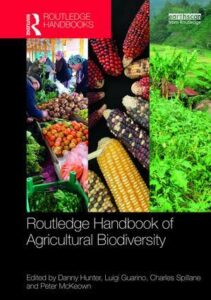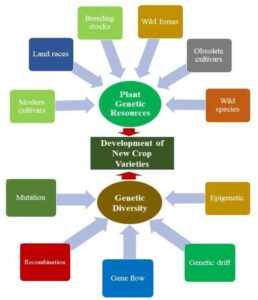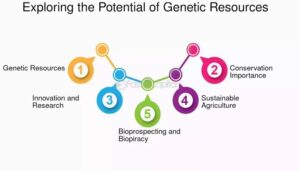Back to: Environmental Biology 300 Level
Welcome to class!
Hello bright mind! Have you ever noticed how different plants and animals are, even within the same species? From the giant iroko tree to the small okra plant, from lions in Yankari Reserve to tiny butterflies in your backyard—nature is full of variety. This variety of life is what we call biodiversity, and it includes something very special: genetic resources. Today, you’ll learn why this variety matters, how it supports life, and why we must protect it now more than ever.
Biodiversity And Genetic Resources
Understanding Biodiversity
Biodiversity refers to the variety of life on Earth. It includes all plants, animals, fungi, and microorganisms, as well as the ecosystems they form. It exists at three levels:

Genetic diversity – variation within species (e.g. different varieties of maize or local goats).
Species diversity – different species in an area (e.g. elephants, baobab trees, termites).
Ecosystem diversity – different ecosystems (e.g. forests, rivers, wetlands, savannahs).
Nigeria is rich in biodiversity—from the Niger Delta mangroves to the Jos Plateau grasslands. But this richness is being lost at an alarming rate due to deforestation, pollution, climate change, and illegal hunting.
What are Genetic Resources?
Genetic resources are the genetic material of plants, animals, or microbes that have value for food, agriculture, health, or scientific research. This includes local crop varieties, traditional livestock breeds, and even bacteria used in medicines or farming.

For example, local sorghum varieties in northern Nigeria are drought-resistant—an essential trait as climate change worsens. If we lose these local types, we may also lose the ability to grow food in dry regions in the future.
Importance of Biodiversity and Genetic Resources
Food security – Genetic diversity ensures crops can survive pests, diseases, and harsh conditions.
Medicine – Many modern medicines are derived from plants and animals (e.g. quinine from bark for malaria).
Livelihoods – Fishing, farming, tourism, and local crafts rely on biodiversity.
Ecosystem balance – Biodiversity supports pollination, nutrient cycling, and natural pest control.
Climate resilience – Diverse systems bounce back more easily from floods, droughts, or heatwaves.
Conservation of Biodiversity and Genetic Resources
In situ conservation – protecting species in their natural habitats (e.g. national parks and reserves).
Ex situ conservation – conserving species outside their habitats (e.g. seed banks, botanical gardens, zoos).
Community-based conservation – involving local people in protecting and benefiting from biodiversity.
Laws and policies – like the Nigerian Biodiversity Strategy and Action Plan (NBSAP), which outlines how Nigeria should conserve biodiversity.

Threats to Biodiversity in Nigeria
Habitat destruction due to urbanisation and agriculture
Pollution of rivers, soil, and air
Overexploitation of wildlife and plants
Introduction of invasive species
Climate change and natural disasters
For instance, the overharvesting of wild medicinal plants in Enugu and Cross River is putting pressure on natural ecosystems and local healthcare systems.
Summary
- Biodiversity includes genetic, species, and ecosystem variety.
- Genetic resources are the valuable genetic materials in plants, animals, and microorganisms.
- Biodiversity supports food security, medicine, livelihoods, and environmental health.
- Conservation methods include in situ, ex situ, community-based efforts, and legal protection.
- Major threats in Nigeria include habitat loss, pollution, overexploitation, and climate change.
Evaluation
- What are the three levels of biodiversity?
- Give two examples of genetic resources and explain their importance.
- Mention three benefits of biodiversity to humans and the environment.
- List two conservation methods used to protect genetic resources.
- Identify two threats to biodiversity in Nigeria.
Well done, thoughtful learner! By understanding and protecting biodiversity and genetic resources, you’re helping secure Nigeria’s food, health, and environmental future. Keep up the great work—Afrilearn is proud to be with you on this exciting journey of knowledge!
